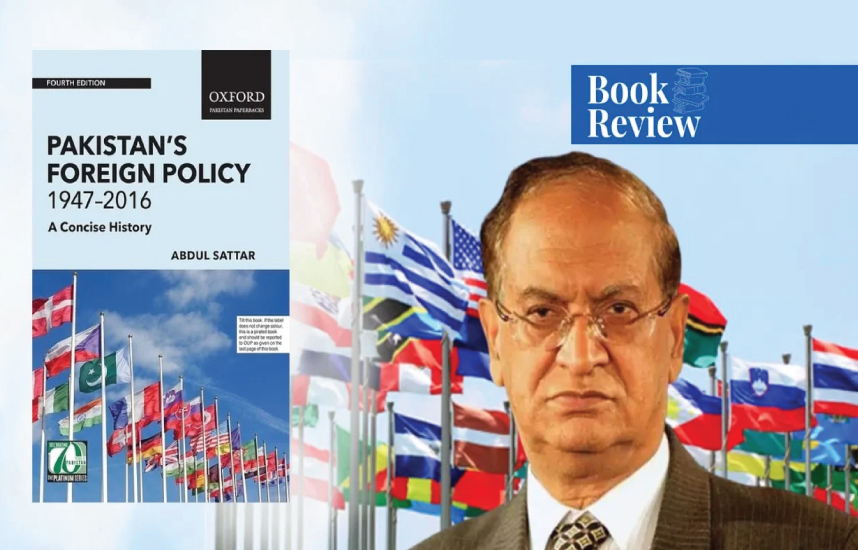In “Pakistan’s Foreign Policy, 1947-2016: A Concise History,” a former diplomat and foreign minister of Pakistan, Abdul Sattar, charts the foreign policy of Pakistan from its inception. It is another book strongly recommended to CSS candidates because of the social and political aspects being used to understand Pakistan’s foreign policies.
Author
Abdul Sattar, the author of “Pakistan’s Foreign Policy, 1947-2016: A Concise History,” brought many laurels to the country while serving as the foreign minister and permanent ambassador to International Atomic Energy Agency (IAEA). He stepped into the foreign services of Pakistan in the 1950s and remained part of many foreign delegations such as the Simla Agreement of 1972. As a foreign secretary in the 1980s, he played a vital role in diffusing the tension between India and Pakistan while working on various nuclear issues and strategies.
The Indian Subcontinent
In “Pakistan’s Foreign Policy,” Abdul Sattar chronicles the events that affected foreign relations and the domestic politics of Pakistan. It tries to provide a more authoritative view of foreign policy and how it evolved during different tenures. In the starting chapters, he portrays a scenario of historical events which laid the foundation of Pakistan. The state which was carved out from the vast empire and that expanded from the Bay of Bengal to the Arabian sea was a conglomerate of many religions, languages, ethnicities, and cultures.
Following Alexander’s invasion across the Suleiman range in 325 BC, Chandragupta Maurya conquered the Gangetic and Indus plains. This land gave birth to the greatest civilization in the world, the Indus civilization. The region later became an amalgamation of empires and dynasties.
When Muslims swept across the world carrying the zeal of religion, the Indian subcontinent, too, wouldn’t be spared. The most galvanized story of the Muslim world is where Muhammad Bin Qasim defeated the tyrant leader, Raja Dahar, and laid the foundation of a new empire. The subcontinent also attracted the British, a colonial power far advanced in economy, power, and knowledge.
Pakistan is Born
The strenuous struggle bore fruit and Pakistan emerged as an independent Islamic state on August 14, 1947. Muhammad Ali Jinnah articulated a new vision for Pakistan based on the quest for peace and prosperity. In one of his speeches, he said, “There lies in front of us a new chapter and it will be our endeavor to create and maintain goodwill with Britain, and our neighborly dominion, Hindustan, along with other sisterly nations so that we all together may make our greatest contribution to peace and prosperity.”
There are several occasions where Mr. Jinnah elaborated the foreign policy of Pakistan based on the principles of bilateralism, cordial relations with neighboring countries especially India, open door policy for Muslim nations, and support for the self-determination of oppressed and colonized states.
The first foreign minister of Pakistan, Sir Zafarullah Khan, vociferously raised his voice for the independence of Indonesia, Libya, Morocco, Sudan, Tunisia, and other colonial states. The matters soon worsened due to the Kashmir issue, Pakistan’s rejection of the USSR proposal, and the visit to the US in February 1950.
For economic support, Pakistan incessantly painted the Soviet Union as an ‘evil empire.’ Soon, Pakistan signed defense treaties with the US like the Middle East Defense Organization (1953), Mutual Defense Treaty in 1954, SEATO 1954, CENTO 1956, and the Mutual Defense Agreement in 1959. Pakistan’s sudden jump to the Western camp prompted Muslim countries to withdraw their support for the unsolved Kashmir issue.
Changing Camps
During the sixties, Pakistan changed its camp and aligned with USSR and China. Nikita Khrushchev extended a hand of friendship and offered economic and technical support to Pakistan. The Indo-Pakistani war of 1965 proved very disastrous for both countries economically and politically. The Indo-Pakistani war of 1971 also proved to be another hit to Pakistan’s diplomatic and political fronts.
In the socialist seventies, Zulfiqar Ali Bhutto, a man with Bonapartist attributes and authoritative proclivity, became the savior of the shattered nation. He elevated the nation from the ashes of disintegration to the sky of prestige. The momentous turn was the nuclear program of Pakistan. The foreign policy had also been more tilted towards Middle Eastern states and the Soviet Union.
The revivalist eighties was a turning point where the West and Muslim countries started pouring billions of rupees into Pakistan, as the country was an epicenter of the training of Mujahids and CIA operations. The flow of the economy also helped Pakistan to expedite its nuclear program and reinforce its ailing economy.
The muddling nineties were marked by unstable political governments—with Benazir Bhutto and Nawaz Sharif competing with each other to consolidate their position in the government—followed by a military coup. Pakistan was also widely condemned for recognizing the Taliban regime in Afghanistan.
After the 9/11 attacks, the US waged a global war against terrorism. Due to economic restraints and international isolation, Pakistan had no choice but to join the war on terror as a non-NATO ally. Later, China inked the “China-Pakistan Economic Corridor (CPEC)” with Pakistan in 2014 and pledged to invest 62 billion dollars in Gawadar, the energy sector, and the infrastructure of Pakistan.
Conclusion
In “Pakistan’s Foreign Policy,” Abdul Sattar maintains that Pakistan remained a victim of inherited security paranoia and structural compulsions. The book represents a thorough view of Pakistan’s foreign policy during different eras. The rejection of the proposal of the USSR for friendship was a “diplomatic blunder” for Pakistan which adversely affected Pakistan’s standing on various issues, particularly Kashmir.



